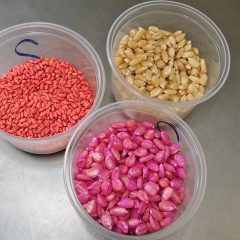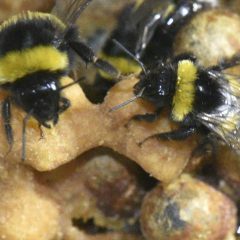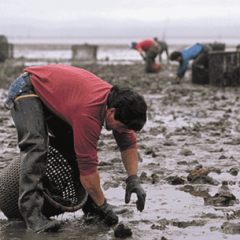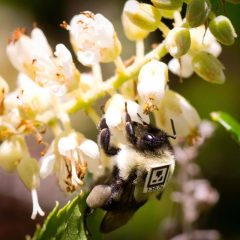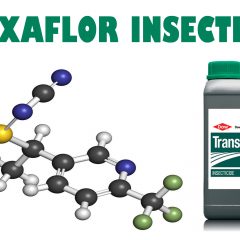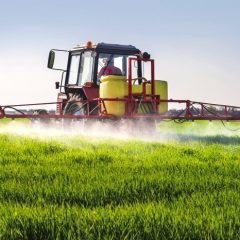It appears that scientists, and farmers too, are taking a closer look at the ubiquitous use of neonicotinoid seed treatments in US corn, soybean and other crops. Neonics are powerful insecticides used to coat the outside of a wide variety of seeds including grain and oilseed crops. The brightly-dyed layer of pesticide is designed to […]
Read More, References, Comment »
Just a quick note to share a handy new resource put out by the University of Wisconsin’s Extension Office. “What’s on your seed?” is a one page guide to the many different types of seed treatments used on corn and soybean crops these days. Seed treatments are organized by active ingredient and treatment type (fungicide, […]
Read More, References, Comment »
New science has, for the first time, replicated in a lab experiment the neural impacts on baby bees triggered when foraging adults are exposed to one type of insecticide. The widely used neonicotinoid (“neonic”) insecticide imidacloprid was the focus of the study done by a team at Imperial College London, whose key finding is summarized […]
Read More, References, Comment »
The Seattle Times reported this week that oyster growers in southwestern Washington state have given up their years-long quest for permits to spray imidacloprid insecticides on their shellfish farms. This story has been brewing along the coastal mudflats of Gray’s Harbor and Willapa Bay, which are about three hours from Seattle. Shellfish farmers, some of […]
Read More, References, Comment »
A Scientific American piece on neonicotinoid insecticides begins with a fascinating story about a wildlife rehab clinic in Montana. In the 1990s, a “bizarre trend” was noticed — an unusual number and diversity of birth defects in roadkill deer and other big game autopsied at the clinic. Scientists at the clinic pondered what could have […]
Read More, References, Comment »
A multidisciplinary research team including epidemiologists, bio-statisticians, and neurologists has identified a link between prenatal and infant pesticide exposure and increased risk of developing autism spectrum disorder (ASD) for residents of California’s Central Valley. The UCLA-based team started with a database of almost 3,000 people with a diagnosis of ASD born between 1998-2010 in eight […]
Read More, References, Comment »
Two years ago in 2017, scientists with the USGS and the University of Iowa first reported that neonicotinoid insecticides were “persistent” in drinking water samples collected at the University’s Iowa City campus during a seven week period after the corn planting season (May-July). The reason why was no mystery — at least 80% of the GMO […]
Read More, References, Comment »
We know that neonicotinoid insecticides are no-good for bees and other pollinators, even at very low levels of exposure. We know the major neonic — imidacloprid (Admire®) — is the single most acutely toxic pesticide to bees ever discovered, narrowly edging out the former #1 methyl parathion. But scientists are still trying to figure just […]
Read More, References, Comment »
With neonicotinoid insecticides under fire for contributing to pollinator decline, Dow AgroSciences is pushing its sulfoxaflor insecticide as an alternative. As Environmental Health News reports, Dow applied to the EPA for an expansion of the registration of sulfoxaflor to allow use on “rice, avocados, residential ornamentals and at tree farms and greenhouses.” But, is this new […]
Read More, References, Comment »
Does the excerpt below from the September 10th issue of Politico’s Morning Agriculture e-newsletter sound familiar? It echoes sentiments on Hygeia in an “Endnote” to our August 20, 2018 post on the Lee Johnson verdict and award, which states — Endnote: The first half of August 2018 will go down in the history of pesticide use and regulation […]
Read More, References, Comment »

